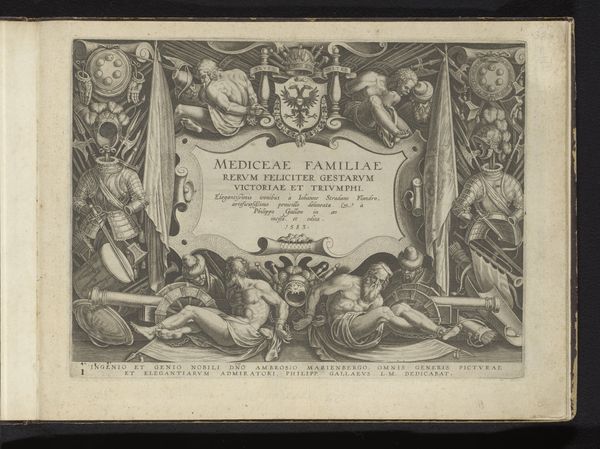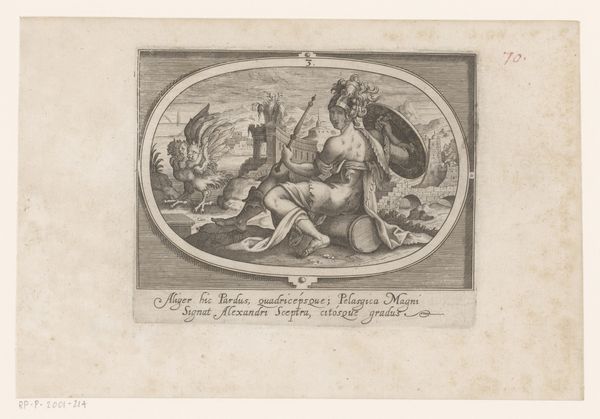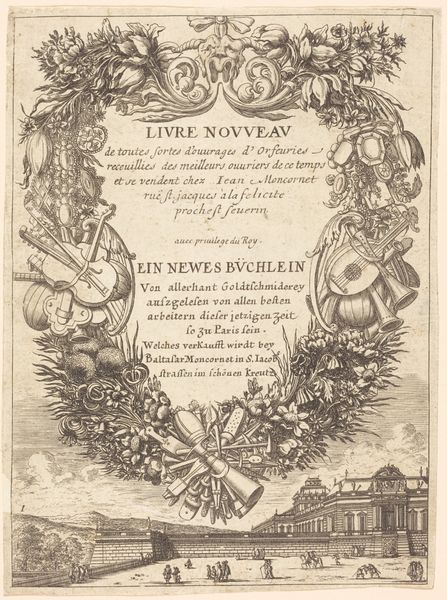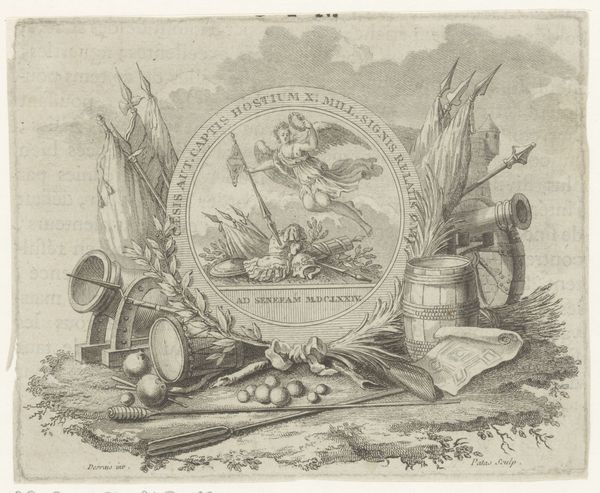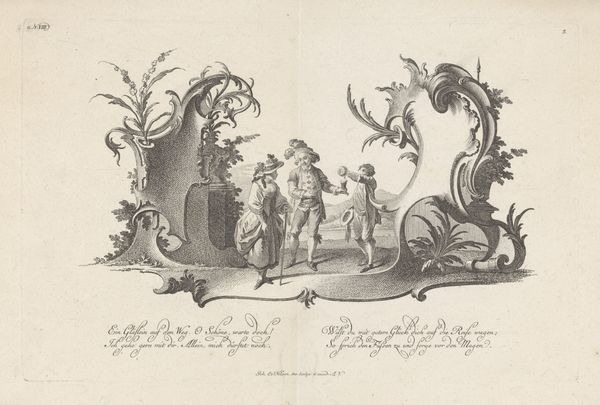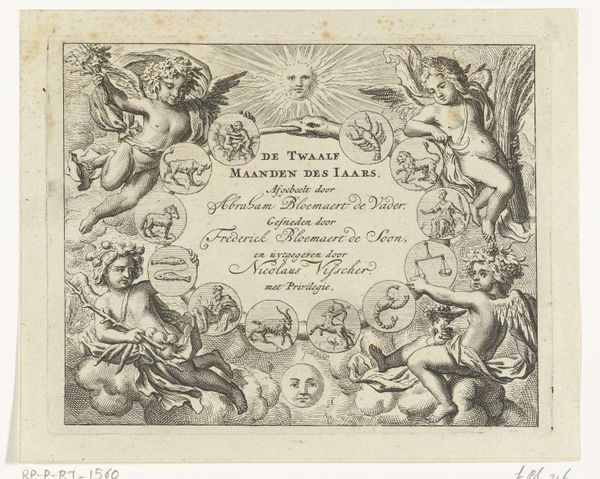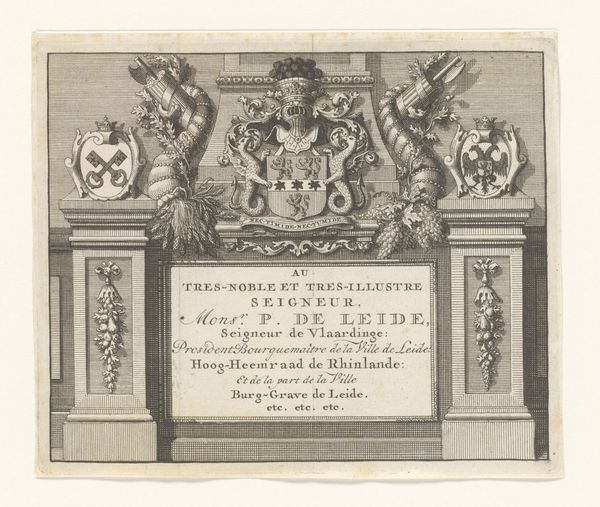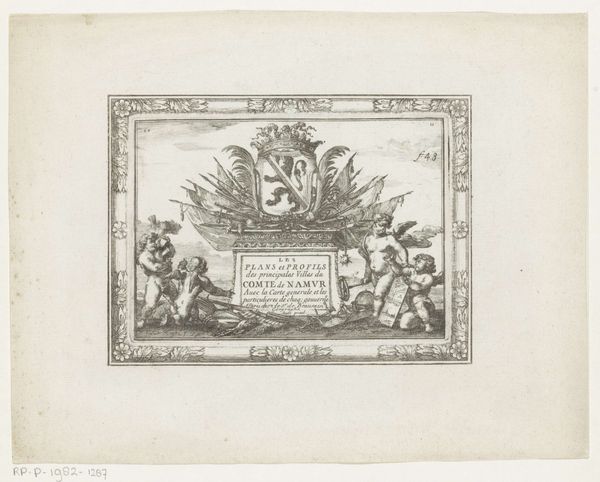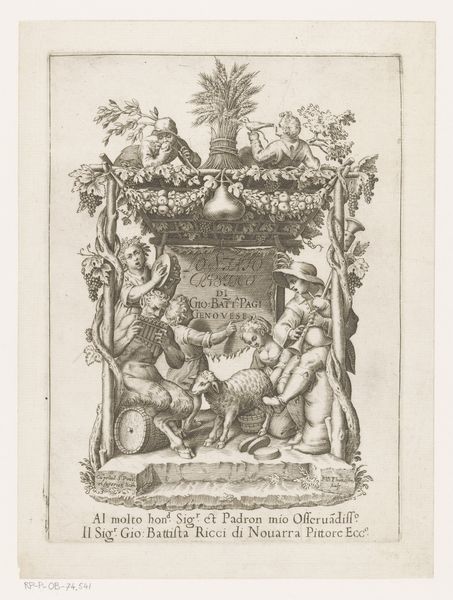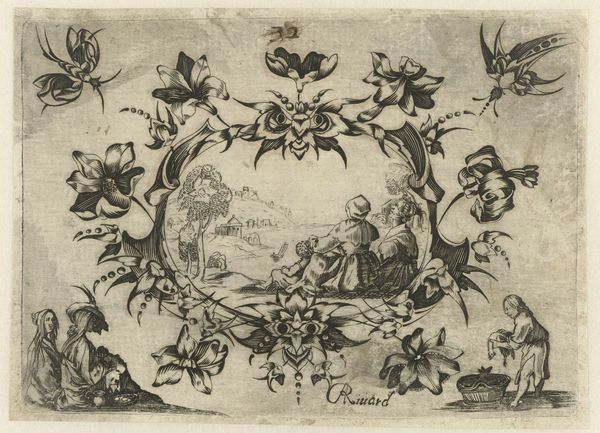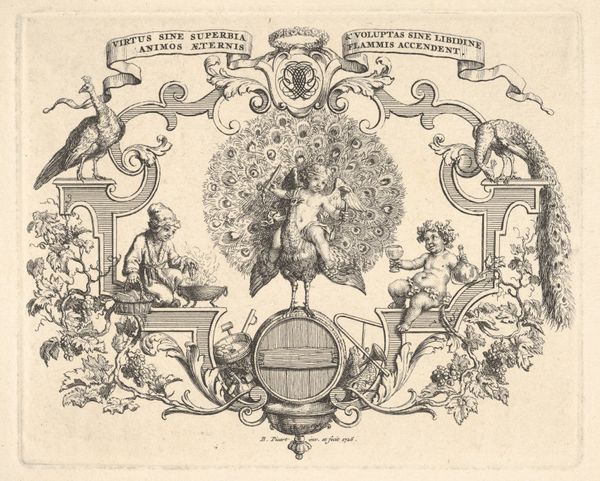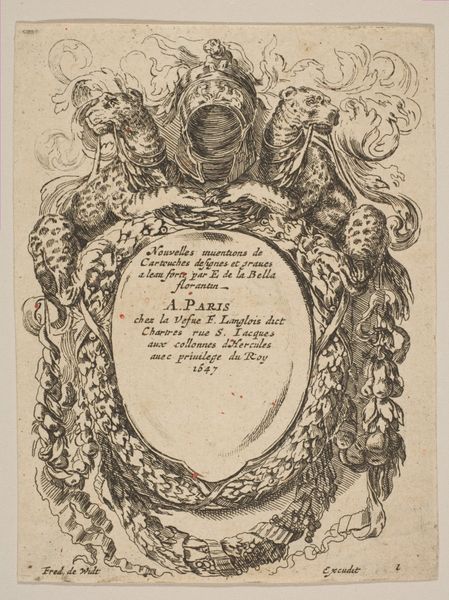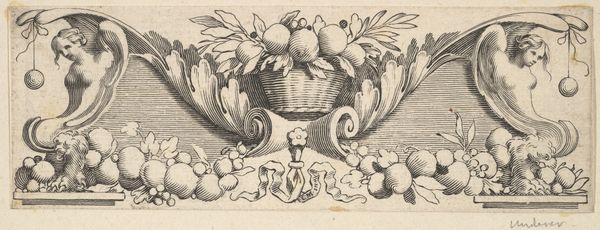
drawing, print, engraving
#
drawing
#
baroque
# print
#
figuration
#
decorative-art
#
engraving
Copyright: Public Domain
Curator: Immediately striking is the textural richness achieved through meticulous engraving in this print. It appears almost sculptural despite being a two-dimensional work on paper. Editor: Indeed. Let’s delve into the context. This is “Paedopaegnion,” a print created by Wenceslaus Hollar in 1646. It's now part of the Metropolitan Museum of Art’s collection. What initially grabs my attention is the framing; those plump cherubs and the cornucopia of fruits, they're practically bursting with Baroque opulence! Curator: Precisely. Note the use of line, how the density varies to create depth and volume. The arrangement directs the eye toward the central cartouche, the literal frame in this composition. What function do you believe this textual block provides? Editor: Well, in that period, images like this often served a didactic purpose. I see a dedication to D. Georgio ab Ettenhard, identifying him as a patron of the arts and an important figure in the Spanish Netherlands. Curator: A visual manifestation of patronage, if you will. Observe the semiotic language. The cherubs, the overflowing bounty of fruits... These are visual cues alluding to prosperity and generosity, reflective of the patron's virtues and position. The inscription elevates the entire image, solidifying its cultural currency. Editor: It’s interesting how this combination works; it both immortalizes the patron while making art accessible—disseminating these allegorical themes amongst a broader audience via prints like this one. What message did the artist, Hollar, intend? Curator: I believe it's a self-conscious demonstration of artistic skill and intellect but I argue his message is in service to those economic considerations we've identified. Hollar showcases his proficiency in translating form and texture to this reproducible medium while participating in, and benefiting from, a clear economic ecosystem. Editor: A visual commodity, so to speak, operating within established social networks. Even today, such dialogues resonate. Appreciating Hollar's “Paedopaegnion” highlights how artistry and societal forces are often deeply intertwined. Curator: Agreed, observing its construction brings one closer to understanding a slice of cultural history, an enduring artifact demonstrating artistic process and human interconnection.
Comments
No comments
Be the first to comment and join the conversation on the ultimate creative platform.
